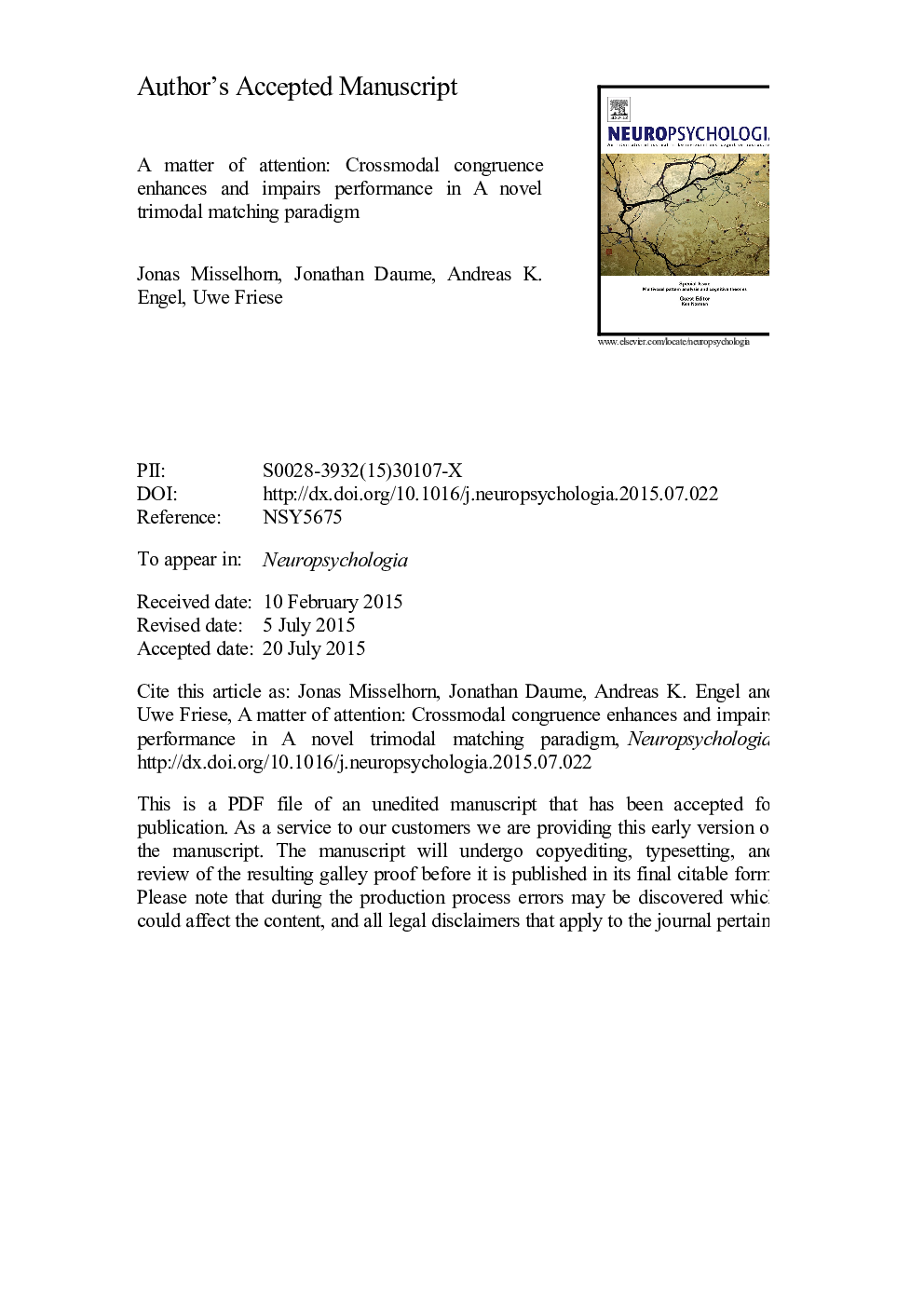| Article ID | Journal | Published Year | Pages | File Type |
|---|---|---|---|---|
| 7318864 | Neuropsychologia | 2016 | 33 Pages |
Abstract
A novel crossmodal matching paradigm including vision, audition, and somatosensation was developed in order to investigate the interaction between attention and crossmodal congruence in multisensory integration. To that end, all three modalities were stimulated concurrently while a bimodal focus was defined blockwise. Congruence between stimulus intensity changes in the attended modalities had to be evaluated. We found that crossmodal congruence improved performance if both, the attended modalities and the task-irrelevant distractor were congruent. If the attended modalities were incongruent, the distractor impaired performance due to its congruence relation to one of the attended modalities. Between attentional conditions, magnitudes of crossmodal enhancement or impairment differed. Largest crossmodal effects were seen in visual-tactile matching, intermediate effects for audio-visual and smallest effects for audio-tactile matching. We conclude that differences in crossmodal matching likely reflect characteristics of multisensory neural network architecture. We discuss our results with respect to the timing of perceptual processing and state hypotheses for future physiological studies. Finally, etiological questions are addressed.
Related Topics
Life Sciences
Neuroscience
Behavioral Neuroscience
Authors
Jonas Misselhorn, Jonathan Daume, Andreas K. Engel, Uwe Friese,
